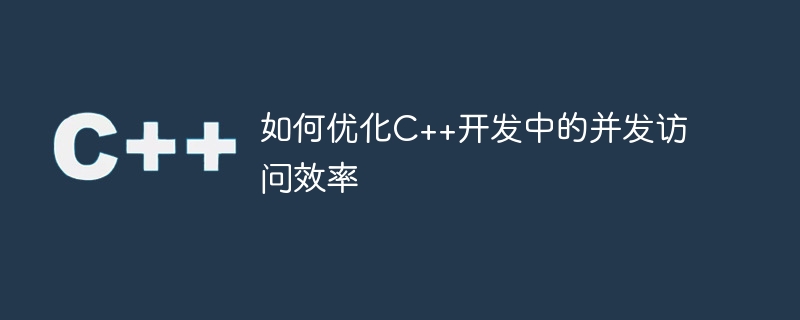

How to optimize concurrent access efficiency in C development
In today's era of increasingly multi-core processors, making full use of multi-threading and concurrent access technology has become a way to improve software performance. The essential. As a high-performance programming language, C's optimization of concurrent access capabilities is crucial to improving program execution efficiency. This article will explore some methods to optimize concurrent access efficiency in C development.
First of all, choose the number of threads reasonably. Too many threads can lead to resource contention and context switching overhead, while too few threads cannot take full advantage of multi-core processors. In order to choose the appropriate number of threads, experiments and performance testing can be used to determine the optimal number of threads.
Secondly, avoid excessive lock competition. In a multi-threaded environment, locks are a commonly used synchronization method. However, too much lock contention can lead to performance degradation. In order to avoid lock competition, the following methods can be used:
In addition, the rational use of multi-core optimization technology is also the key to optimizing concurrent access efficiency. Multi-core optimization technology can execute tasks in parallel on multiple cores to fully utilize the capabilities of multi-core processors. The following are some common multi-core optimization techniques:
Finally, for concurrent access optimization in C development, performance testing and tuning are also required. Performance testing can help locate performance bottlenecks and determine the direction of optimization. Tuning is to improve and optimize the code based on test results to improve concurrent access efficiency.
In short, optimizing concurrent access efficiency in C development is the key to improving program performance. By rationally selecting the number of threads, avoiding excessive lock competition, rationally using multi-core optimization technology, and performing performance testing and tuning, the concurrent access efficiency of C programs can be maximized. These methods are not only suitable for multi-core processor environments, but can also improve program performance on single-core processors.
The above is the detailed content of How to optimize concurrent access efficiency in C++ development. For more information, please follow other related articles on the PHP Chinese website!
 what is optimization
what is optimization
 Baidu keyword optimization software
Baidu keyword optimization software
 Baidu SEO keyword ranking optimization method
Baidu SEO keyword ranking optimization method
 What are the differences between c++ and c language
What are the differences between c++ and c language
 Recommended learning order for c++ and python
Recommended learning order for c++ and python
 Cost-effectiveness analysis of learning python and c++
Cost-effectiveness analysis of learning python and c++
 Is c language the same as c++?
Is c language the same as c++?
 Which is better to learn first, c language or c++?
Which is better to learn first, c language or c++?




